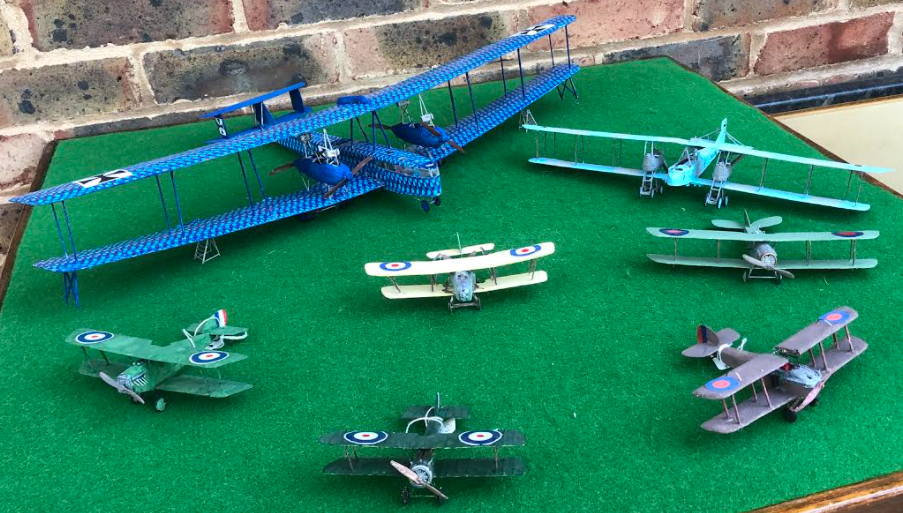BIGGIN HILL – HOME DEFENCE BASE /Prototype Testing; December 1917 Onwards
Earlier in WW1 (1915/16) Britain became under attack from Zeppelin Airship bombers. These attacks were met by the Royal Flying Corp pilots flying machines of the day. After shooting down a number of these slow moving raiders, the Germans ceased these raids.
However, by 1917, the Germans were equipped with well armed, faster heavy bomber aircraft. England was again under attack by a more serious adversity. This required setting up a new Home Defence force, located to protect vulnerable targets such as London.
Biggin Hill aerodrome occupied a unique position, guarding the southern approaches to London, and was of great importance in the defence of the capital against air attack –
• Forced to take the shortest route to London because of their limited range, the German planes flew over the Wireless Testing Park at Biggin Hill. Searchlights were introduced, work was begun on sound locators and barrage fire became more accurate.
* Pilots from Biggin Hill (141 Squadron) defended London against attacks by Gotha and Zeppelin Staaken bombers.
• On 18 May 1918, the Germans mounted their biggest raid of the war, amassing more than forty bombers against London. Squadron 141 was led to the raiders with reasonable accuracy by the sound detector system.
• Only on the clearest nights did the searchlight crews attempt to find the raiders by eye. The rest of the time they used sound. With eyes shut and stethoscopes clamped to their ears, the two operators of the sound detector on each site slowly rotated four massive trumpets, swivelling in pairs on the horizontal and vertical axes, until they picked up the beat of the aero-engines. Listening intently, they balanced the sound between their left and right ears until the two vibrations merged into a single intense pain in the centre of the forehead when they were on target.A Separate, additional activity given to 141 Squadron while part of the Home Defence Force was to “Combat Evaluate” new prototype aircraft and to test wireless communications system in new ranges of aircraft before their deployment to front line Squadrons on the Western Front.
WW1 Aircraft Connected with Biggin Hill – Home Defence Unit – late 1917 to 1918 & German Raiders – 1/72 Scale

Top Left – Clockwise = Zeppelin Staaken R.V1, Gotha G.V, Bristol F. 2B Sopwith Dolphin, Sopwith Pup, Martynsyde F.4 Buzzard.
Centre – Vickers F.B.26 Vampire Plus (not shown) – Royal Aircraft Factory – Aerial Target R/C Drone
Aircraft of the Week

ROYAL AIRCRAFT FACTORY – Aerial Target

VICKERS F.B.26 VAMPIRE

MARTINSYDE F. 3 / F.4 Buzzard

Sopwith 5F.1 Dolphin

SOPWITH PUP

ZEPPELIN-STAAKEN R.VI






